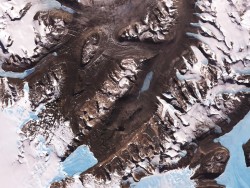A Warming Earth Is Making It Harder to Study Mars
December 8, 2016

THE DRY VALLEYS are home to some of the unfriendliest terrain that humans could contemplate setting foot on. It’s frigidly cold, incredibly dry, and its rust-colored soil is practically lifeless. Yet, despite all appearances to the contrary, these valleys are not 33 million miles away on Mars. They’re right here on Earth—and they’re facing down a very Earth-bound problem.
“A cold day in the Dry Valleys is like an average day on Mars,” explains University of Texas geophysicist Joe Levy, who has been visiting and studying Antarctica’s Dry Valleys since 2004. Those cold temperatures, which regularly dip below -55 degrees Celsius, combine with some of the driest dirt on Earth to form an Earth-based Mars lab.
WIRED, Dec.3, 2016
Featuring: Joe Levy, research associate, The University of Texas Institute for Geophysics, Jackson School of Geosciences
